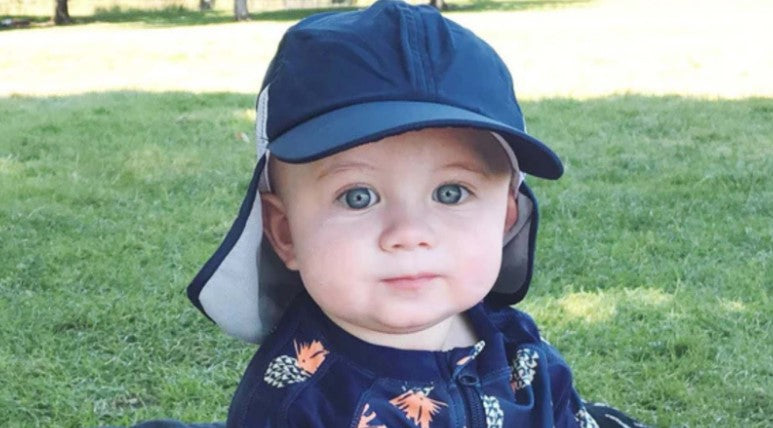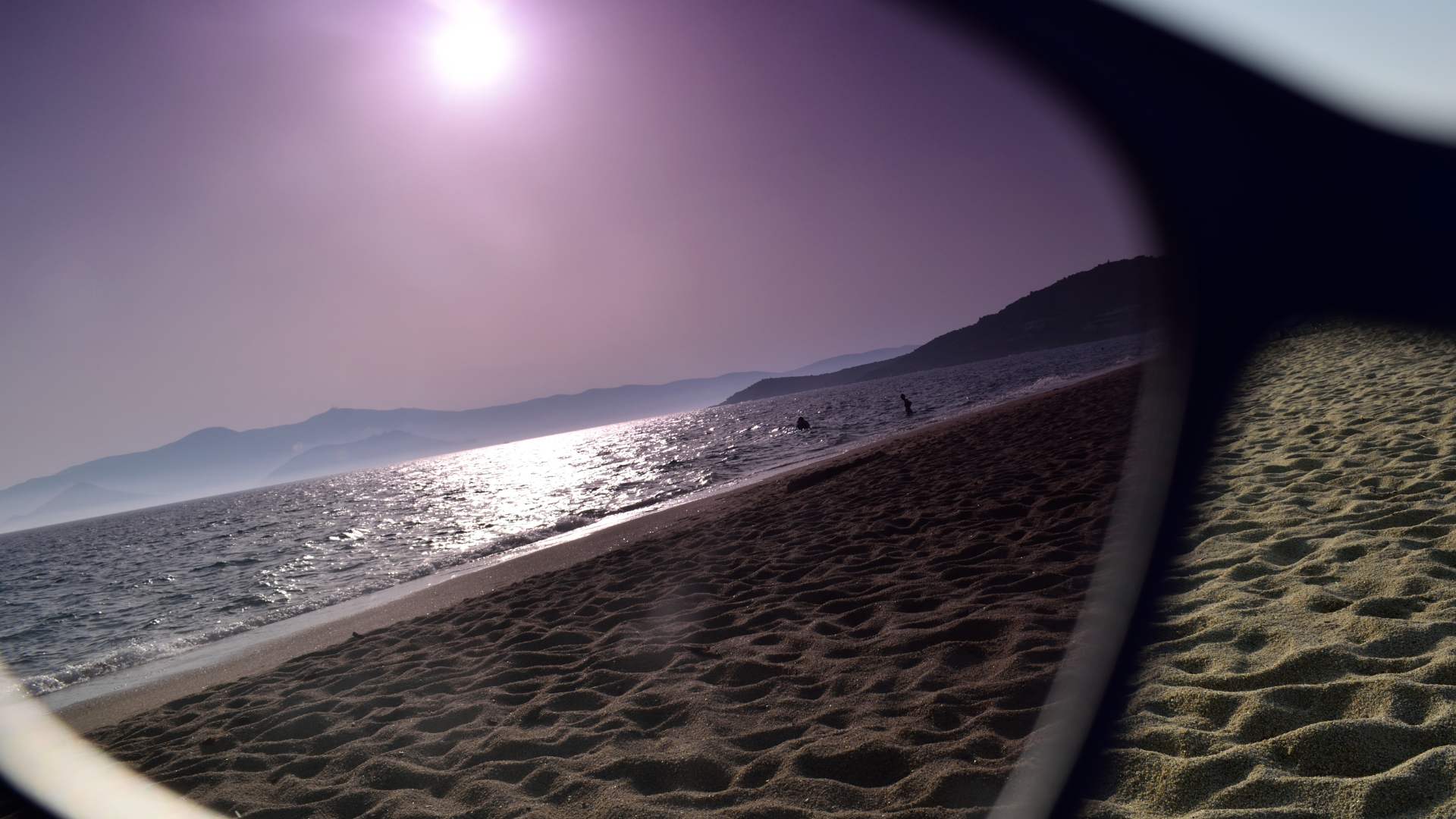
Sun safety: Useful tips for kids (and parents)
Kids love playing in the sun, but according to the University of Kentucky, even 15 minutes without proper sun protection can damage the skin. Let's explore how to keep your children safe while they enjoy their sunny adventures.
Quick links:
Apply broad-spectrum sunscreen
Keep babies out of direct sunlight
Watch for signs of overheating
With these special precautions, you’ll have many happy hours of fun in the sun without the skin damage.
Choose UV-protective swimwear
UV-protective swimwear uses specialized fabrics that shield your child's skin from dangerous ultraviolet radiation. Unlike regular swimsuits that may let up to 50% of ultraviolet rays pass through to the skin (especially when wet), ultraviolet protection factor (UPF) 50+ swimwear blocks 98% of UVA and UVB rays. This consistent protection won't wash off or wear away during a day of water play.
The best sun-protective swimsuits feature:
-
Full coverage designs that protect more skin.
-
UPF 50+ rated fabrics for maximum UV defense.
-
Easy-to-put-on styles with front zippers.
-
Bright, neon colors that increase visibility in the water.
-
Durable, quality materials that maintain protection even when stretched or wet.
-
Comfortable, lightweight fabrics that keep kids cool.
Remember to cover your child's skin as much as possible with UV-protective swimwear—the more covered skin, the better the protection. Long-sleeve styles provide extra coverage for kids' sensitive shoulders and arms while swim leggings or board shorts protect their legs. Or you can protect their entire bodies with a full-coverage sunsuit.
Seek shade during peak hours
The sun's UV rays are strongest between 10 AM and 4 PM, so this time is particularly risky for children's sensitive skin. Plan your kids' outdoor swimming and beach activities for early morning or late afternoon when UV exposure is lower.
If your children must be outside during peak hours, keep them in shaded areas under:
-
Beach umbrellas or sun shelters.
-
Leafy trees.
-
Covered playgrounds.
-
Pavilions or porches.
Sand, water, and reflective surfaces bounce light back toward your little ones, so your kids need UV protection even in shaded areas. Use this time for indoor activities. When your children return to outdoor play after 4 PM, their skin faces less UV risk, and they can enjoy cooler temperatures for their activities.
Apply broad-spectrum sunscreen for kids
The broad-spectrum sunscreen application is the first thing you should do when you head to the beach or swimming pool with your child. Apply it 15–30 minutes before outdoor activities. Choose a waterproof sunscreen labeled "broad-spectrum" with a sun protection factor (SPF) of at least 30. This protects against UVA and UVB rays that can harm your little one's delicate skin.
Apply a generous layer of sunscreen to all exposed skin. Focus on your child's face, ears, neck, and feet. You can even turn sunscreen application into a fun part of the getting-ready routine for squirmy toddlers and children. Your kids can help rub it in or sing a special sunscreen song.
Reapply your child's sunscreen every two hours. Add fresh sunscreen immediately after swimming or heavy sweating, even with water-resistant formulas. A full day of beach play requires 4–5 sunscreen applications to maintain protection. Set a timer on your phone to track reapplication times for your little ones.
Protect the face and eyes from sun exposure
Your child's face and eyes need extra attention from the sun's harmful rays. A good sun hat shields your little one's face, ears, and neck from UV radiation. Look for wide-brimmed styles with UPF 50+ protection and secure chin straps.
Sunglasses with UV protection protect your child's sensitive eyes from UV rays. The right sunglasses will stay secure during play and block 99–100% of harmful rays. Select sunglasses with impact-resistant lenses and flexible frames for active kids. Also, use lip balm with SPF to protect lips from damaging UV rays.
SwimZip offers UPF 50+ sun hats for kids in fun colors that complement our swimwear collections. Our hats include adjustable chin straps and wide brims for maximum protection. Pair them with our durable children's sunglasses for complete face and eye protection during outdoor adventures.
Keep babies out of direct sunlight
Babies under six months old have minimal melanin in their skin, which increases their risk of skin cancer later in life. The American Academy of Pediatrics advises parents to keep infants out of direct sunlight because of their high risk of sun damage. A single severe sunburn in childhood doubles the risk of melanoma (one of the forms of skin cancer).
Protective clothing offers the safest sun defense for babies. UPF 50+ sunsuits and rash guards shield delicate skin more effectively than sunscreen. Select UPF-rated, wide-brimmed hats that protect your baby's arms, legs, and neck.
Schedule outdoor time before 10 AM or after 4 PM. Create shade for your baby with a stroller canopy, beach umbrella, or sun shelter. When indoors, keep your little one away from direct sun exposure through windows, which can still transmit harmful UV rays.
Model good sun habits
You are your children's role models for building sun protection routines. Make sun safety a normal part of your family's outdoor activities. Put on your UPF 50+ swimwear together before beach time and show your kids how you apply sunscreen to exposed areas. Wear your sun hat and UV-protective sunglasses alongside them.
Explain sun safety to your children in simple terms as you practice it. Tell them why you move to shaded areas during peak sun hours and point out how your matching family swimwear protects everyone from UV rays. Your consistent sun-safe actions will help your children develop lifelong protection habits.
Watch for signs of overheating
Children overheat faster than adults during beach and pool activities. Their small bodies don't regulate temperature as effectively, which means parents need to stay alert for signs of heat stress. A child might not recognize or communicate their discomfort until symptoms become severe.
Watch for these signs of overheating in your children:
-
Unusual fatigue or weakness.
-
Red, flushed face.
-
Rapid breathing or heart rate.
-
Excessive sweating or hot, dry skin.
-
Headache or dizziness.
-
Nausea or vomiting.
-
Confusion or irritability.
-
Muscle and stomach cramps.
Dress your children in lightweight clothing that allows their skin to cool naturally. Create a shaded rest area and make sure your little ones take regular water breaks.
Note: thirst signals dehydration has already begun, so encourage drinking water throughout your outdoor activities.
Kids sun safety tips FAQ
Is it better to wear light or darker colors during hot summer days?
Lighter colors reflect sunlight and heat away from your body, which keeps you cooler on hot days. Dark colors absorb heat and raise body temperature, so save these shades for cooler weather.
What kind of sunscreen is the best?
Mineral sunscreens with titanium dioxide offer excellent protection for unprotected skin. These physical blockers create a barrier that reflects UV rays away from the skin. While spray sunscreen might seem convenient, mineral-based lotions provide more reliable coverage since you can see exactly where you've applied them. Choose broad-spectrum formulas with at least SPF 30 for optimal protection.
Do some skin colors need extra protection from the sun?
Although all skin tones need thorough UV protection, fair skin requires additional precautions because of less natural protection. Darker skin has more natural melanin, but it can still suffer UV damage. Children with albinism need maximum UV defense in all conditions.
How do sunburns in childhood affect future skin cancer risk?
Blistering sunburns during childhood can damage DNA in skin cells, significantly increasing the risk of skin cancer later in life. Your child's lifetime sun exposure starts from day one, which is why early UV protection is important for long-term health.
Does my child's medication affect skin sensitivity to the sun?
Many common medications increase skin sensitivity to UV rays. Antibiotics, acne medications, and some antihistamines increase UV sensitivity. Your child's skin will burn more easily. Check with your healthcare provider about specific sun protection requirements for each medication.
What are the early signs of sunburns?
Early signs of sunburns appear well before the skin turns bright red:
-
Skin feels warm or hot to the touch
-
A tight, itchy sensation on exposed areas
-
Pink or light red color appears
-
Mild tenderness when the skin is touched
-
Skin appears darker or more flushed than usual
Act quickly if you notice these signs in your children. Move them to shade immediately and cover exposed skin with UPF 50+ protective clothing. Early intervention helps prevent severe sunburn damage.
How is UV exposure different in water than on land?
Direct exposure to UV rays increases in and around water. Water reflects UV radiation upward, which means your child receives exposure to ultraviolet rays from above and below. This reflection can boost UV intensity by up to 50%. Swimming or playing in water requires extra sun protection, even on cloudy days.
Further reading
What are polarized sunglasses?
What is the difference between polarized and non-polarized sunglasses?
Can I get a tan with sunscreen on?
Resources
UK HealthCare. (2021, May 20). 6 simple ways to protect your skin in the sun. UK HealthCare. https://ukhealthcare.uky.edu/wellness-community/blog/6-simple-ways-protect-your-skin-sun


Leave a comment
This site is protected by hCaptcha and the hCaptcha Privacy Policy and Terms of Service apply.